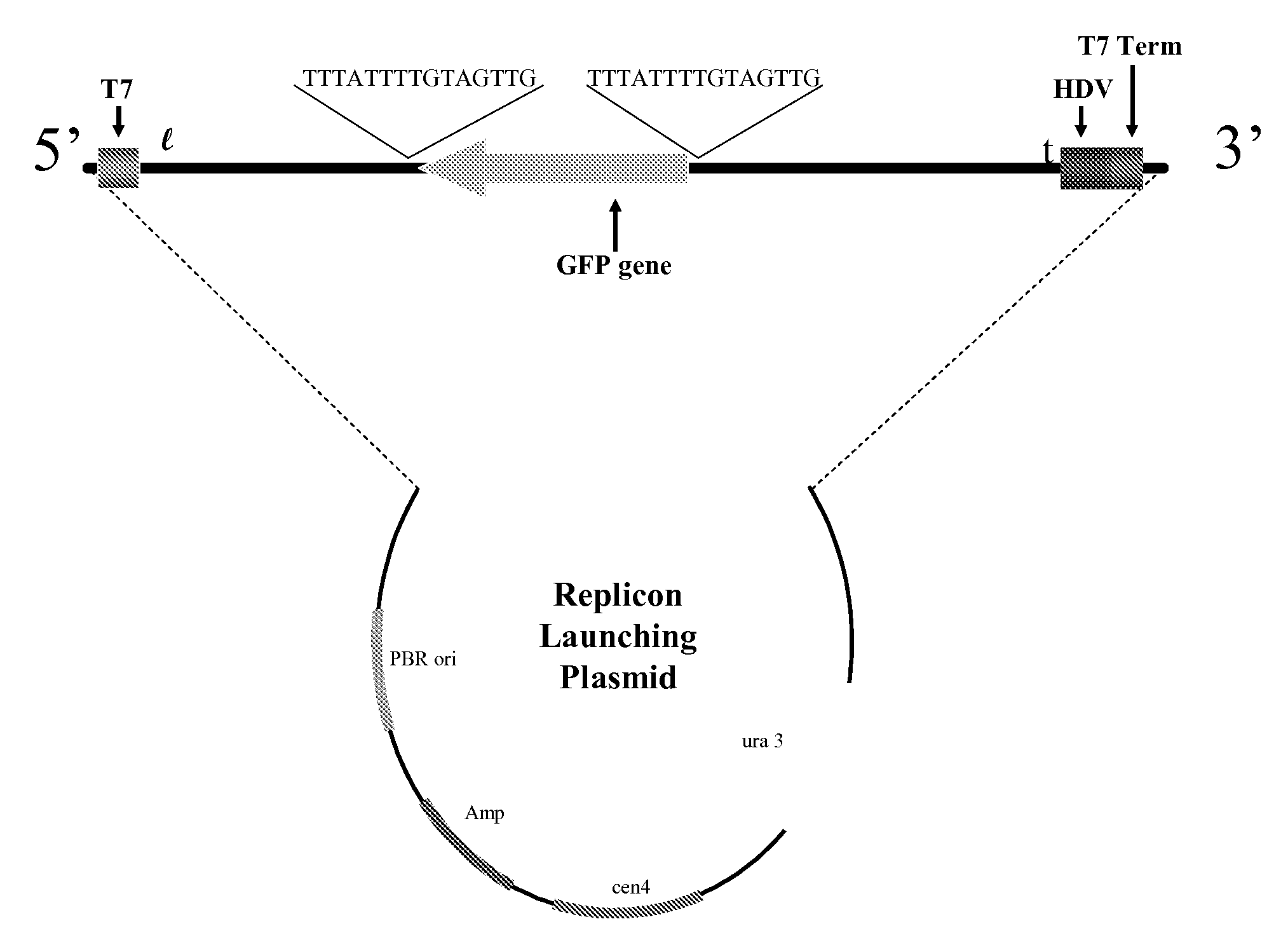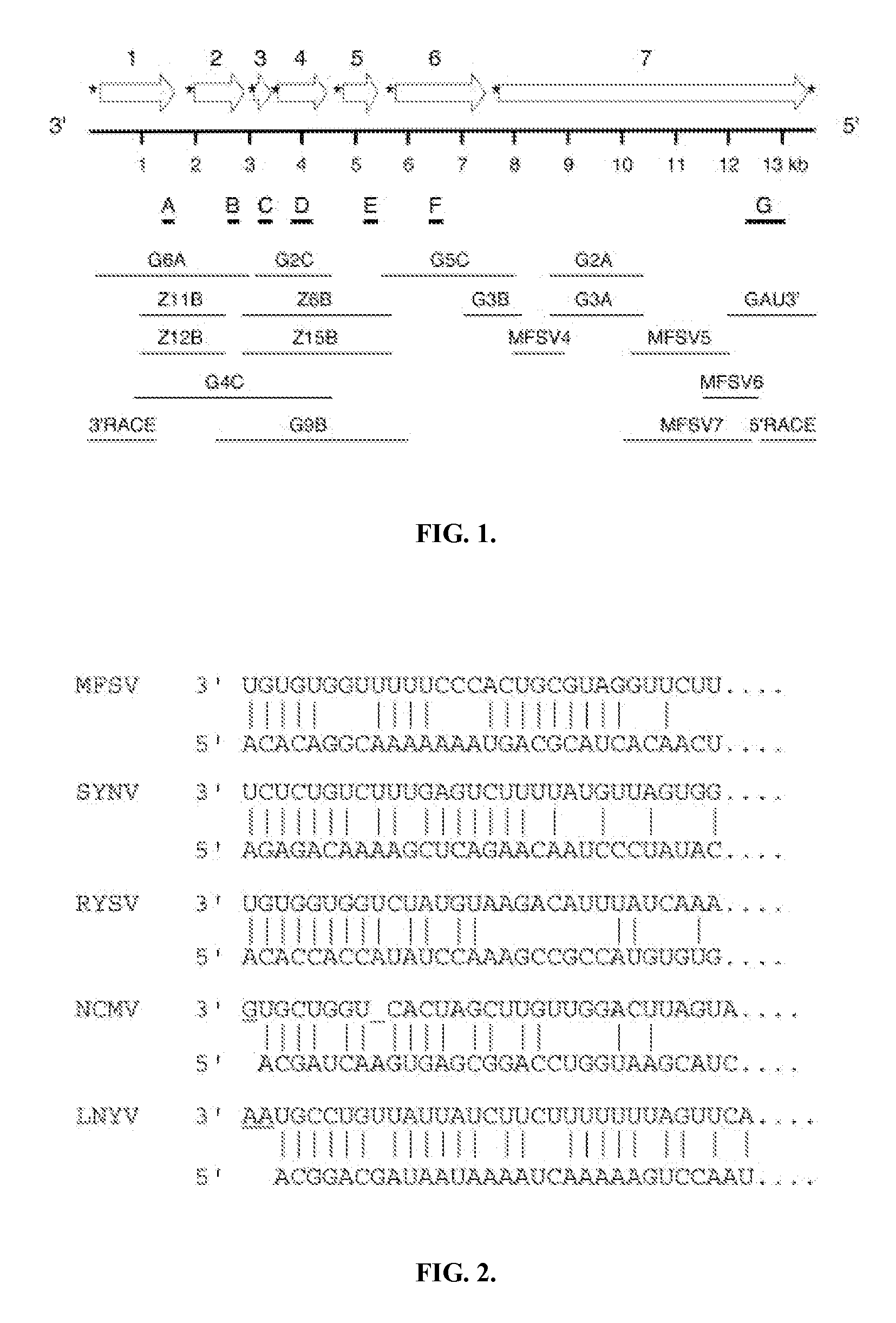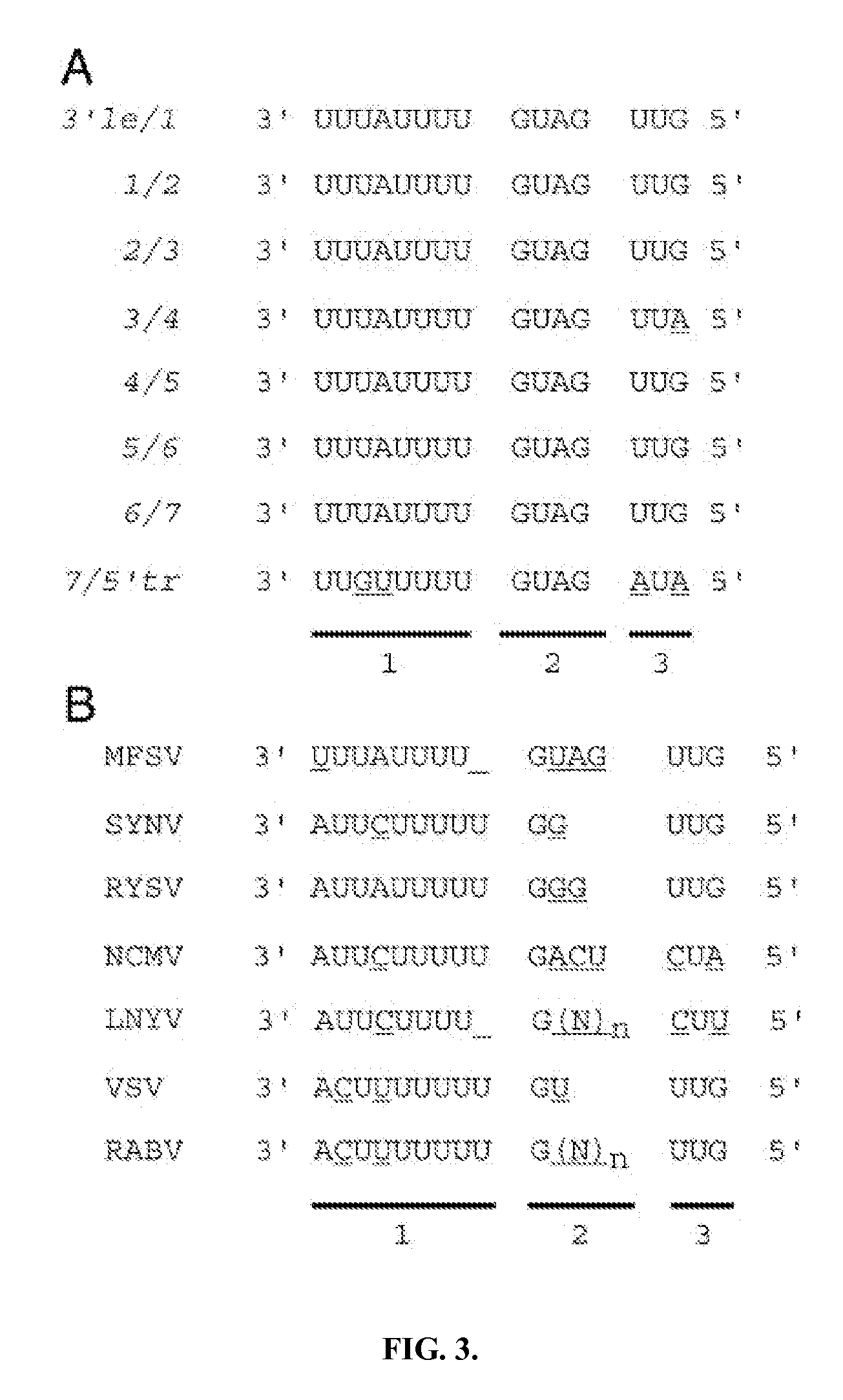Reverse Genetics System
a genetic system and reverse technology, applied in the field of reverse genetics system, can solve the problems of lack of such systems in the knowledge concerning the important diseases caused by a large number of negative-strand rna viruses
- Summary
- Abstract
- Description
- Claims
- Application Information
AI Technical Summary
Benefits of technology
Problems solved by technology
Method used
Image
Examples
example 1
Complete Genome Sequence and in Planta Subcellular Localization of Maize Fine Streak Virus Proteins
[0041] This example shows that the genome of the nucleorhabdovirus maize fine streak virus (MFSV) contains 13,782 nucleotides of nonsegmented, negative-sense, single-stranded RNA. The antigenomic strand contains seven open reading frames (ORFs), and transcripts of all ORFs were detected in infected plants. ORF1, ORF2, ORF5, ORF6, and ORF7 encode the nucleocapsid protein (N), phosphoprotein (P), matrix protein (M), glycoprotein (G), and polymerase (L), respectively. The ORF1(N), ORF4, and ORF5 (M) proteins localized to nuclei, consistent with the presence of nuclear localization signals (NLSs) in these proteins. The ORF2 (P) protein spread throughout the cell when expressed alone but was relocalized to a subnuclear locus when coexpressed with the MFSV N protein. Unexpectedly, coexpression of the MFSV N and P proteins, but not the orthologous proteins of SYNV, resulted in accumulations ...
example 2
Negative-Strand RNA Virus Vector for Improved Expression in Plants and Insects
[0121]FIGS. 6-8 present a schematic illustration of an embodiment of the reverse genetics system of the present invention. As shown in FIG. 6, expression plasmids / vectors capable of expressing MFSV N, L, and P proteins and T7 DNA-dependent RNA polymerase (T7 pol or T7 DdRp) are provided in a yeast cell (FIG. 7 shows the structure of these plasmids in detail). FIG. 6 further shows that a replicon launching plasmid for the expression of GFP protein is also provided in the yeast cell. “GFP” is written backwards to indicate that it is in the negative sense and cannot produce protein (or report) unless it is copied by the MFSV L protein (FIG. 6). FIGS. 7 and 8 show the detailed structure of the replicon launching plasmid and replicon. The replicon represents a minimal subset of the viral genome with the cis acting nucleotide signals required for replication and transcription. The replicon is operably linked to...
example 3
MFSV Can Infect Insect Cells and Replicate in Them
[0148]Drosophila melanogaster Schneider (S)2 cells were incubated with 1 μg, 10 μg or 100 μg of MFSV and 50 μg / ml DEAE-dextran for 2 to 8 days post-inoculation. Using a two-step RT-PCR protocol that results in the amplification of an N protein mRNA fragment of about 1,100 bp but not the corresponding genomic RNA, we detected the transcript corresponding to the MFSV N gene.
[0149] We further conducted Western blot hybridizations with specific MFSV antibodies. Proteins of S2 cell extracts were separated by SDS-PAGE and transferred to nitrocellulose membranes, which were hybridized with MFSV antibodies. MFSV proteins were detected in S2 cells incubated with 10 μg and 100μ of MFSV and 50 μg / ml DEAE-dextran 2, 4, and 6 days post-inoculation. We compared the banding pattern of MFSV in S2 cells to those of MFSV-infected plants and MFSV virions and found them to be similar.
[0150] Immunofluorescence confocal microscopy was used to detect MF...
PUM
| Property | Measurement | Unit |
|---|---|---|
| temperature | aaaaa | aaaaa |
| temperature | aaaaa | aaaaa |
| pH | aaaaa | aaaaa |
Abstract
Description
Claims
Application Information
 Login to View More
Login to View More - R&D
- Intellectual Property
- Life Sciences
- Materials
- Tech Scout
- Unparalleled Data Quality
- Higher Quality Content
- 60% Fewer Hallucinations
Browse by: Latest US Patents, China's latest patents, Technical Efficacy Thesaurus, Application Domain, Technology Topic, Popular Technical Reports.
© 2025 PatSnap. All rights reserved.Legal|Privacy policy|Modern Slavery Act Transparency Statement|Sitemap|About US| Contact US: help@patsnap.com



